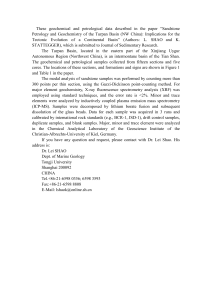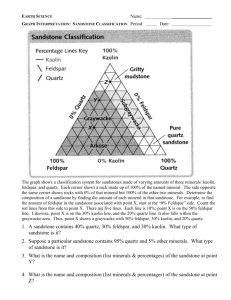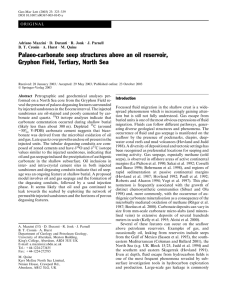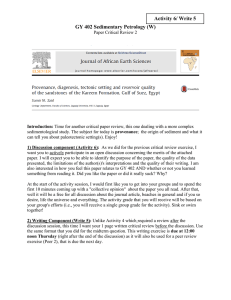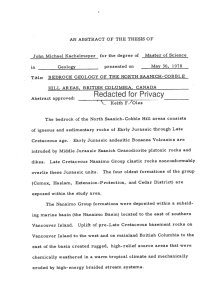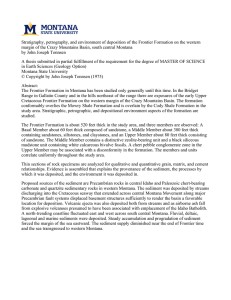Sandstone cementation and its geomorphic and hydraulic implications
advertisement
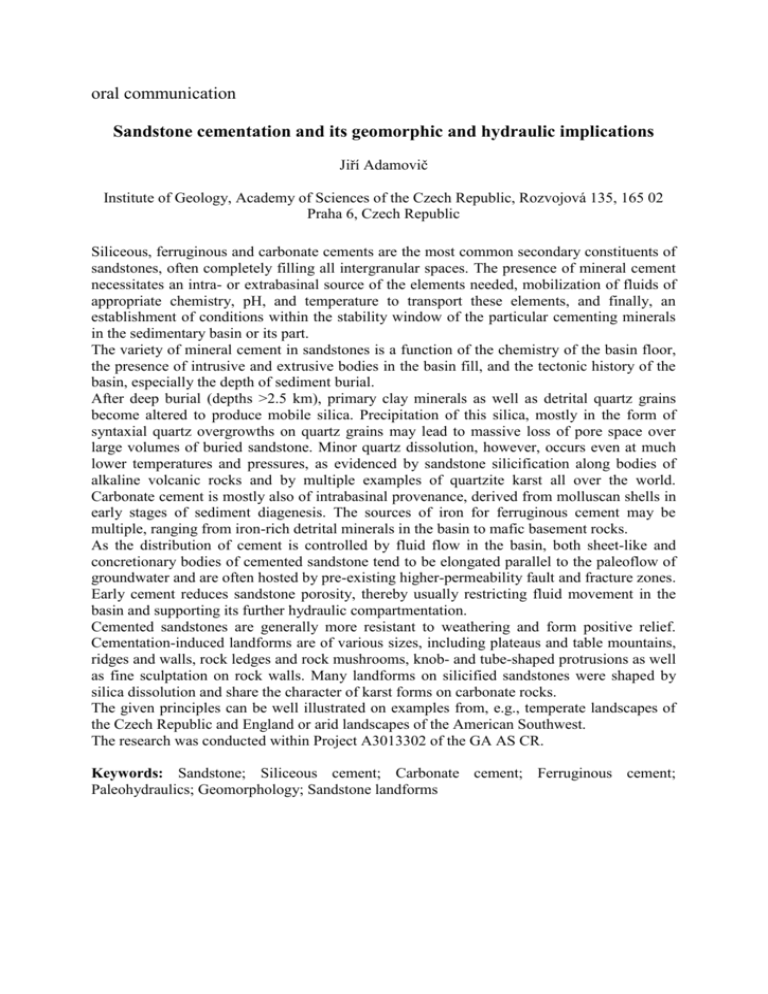
oral communication Sandstone cementation and its geomorphic and hydraulic implications Jiří Adamovič Institute of Geology, Academy of Sciences of the Czech Republic, Rozvojová 135, 165 02 Praha 6, Czech Republic Siliceous, ferruginous and carbonate cements are the most common secondary constituents of sandstones, often completely filling all intergranular spaces. The presence of mineral cement necessitates an intra- or extrabasinal source of the elements needed, mobilization of fluids of appropriate chemistry, pH, and temperature to transport these elements, and finally, an establishment of conditions within the stability window of the particular cementing minerals in the sedimentary basin or its part. The variety of mineral cement in sandstones is a function of the chemistry of the basin floor, the presence of intrusive and extrusive bodies in the basin fill, and the tectonic history of the basin, especially the depth of sediment burial. After deep burial (depths >2.5 km), primary clay minerals as well as detrital quartz grains become altered to produce mobile silica. Precipitation of this silica, mostly in the form of syntaxial quartz overgrowths on quartz grains may lead to massive loss of pore space over large volumes of buried sandstone. Minor quartz dissolution, however, occurs even at much lower temperatures and pressures, as evidenced by sandstone silicification along bodies of alkaline volcanic rocks and by multiple examples of quartzite karst all over the world. Carbonate cement is mostly also of intrabasinal provenance, derived from molluscan shells in early stages of sediment diagenesis. The sources of iron for ferruginous cement may be multiple, ranging from iron-rich detrital minerals in the basin to mafic basement rocks. As the distribution of cement is controlled by fluid flow in the basin, both sheet-like and concretionary bodies of cemented sandstone tend to be elongated parallel to the paleoflow of groundwater and are often hosted by pre-existing higher-permeability fault and fracture zones. Early cement reduces sandstone porosity, thereby usually restricting fluid movement in the basin and supporting its further hydraulic compartmentation. Cemented sandstones are generally more resistant to weathering and form positive relief. Cementation-induced landforms are of various sizes, including plateaus and table mountains, ridges and walls, rock ledges and rock mushrooms, knob- and tube-shaped protrusions as well as fine sculptation on rock walls. Many landforms on silicified sandstones were shaped by silica dissolution and share the character of karst forms on carbonate rocks. The given principles can be well illustrated on examples from, e.g., temperate landscapes of the Czech Republic and England or arid landscapes of the American Southwest. The research was conducted within Project A3013302 of the GA AS CR. Keywords: Sandstone; Siliceous cement; Carbonate cement; Ferruginous cement; Paleohydraulics; Geomorphology; Sandstone landforms



